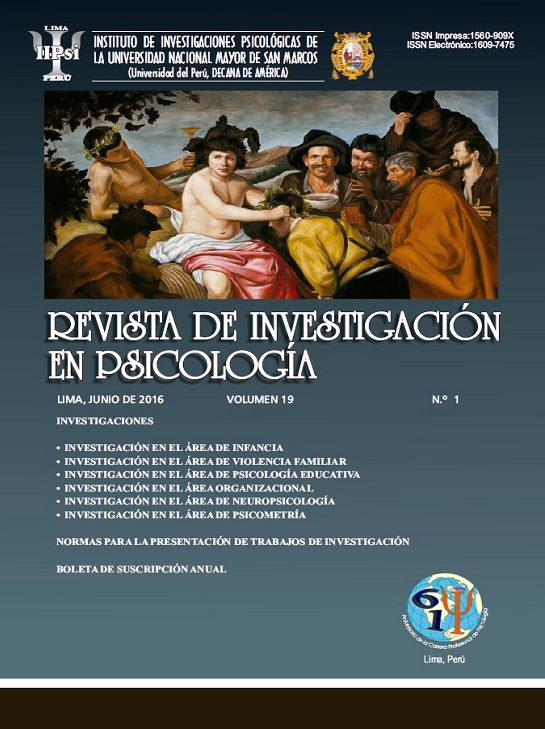Neuropsychological sequelas in patient with aneurysm giant prefrontal postcirugia
DOI:
https://doi.org/10.15381/rinvp.v19i1.12450Keywords:
activity psyquic personal, sindrome prefrontal, model TIPAbstract
The aim of this investigation is to describe and analyze the conditions of the activity staff psychic patients after prefrontal cerebral aneurysm, and explain the commitment of its functional activity through informational theoretical model (Ortiz,1998). The sample consisted of all patients by the doctor and / diagnostics specialist, which they removed an aneurysm bean that has the distinction of being Giant, who request ablacin a segment this area, and other techniques neurosurg of this important structure of the neocortex for processing affectiveemotional, cognitive and conative volitional production of information psychic aware of the individual. The sampling was not Probabilistic, intentional, and data were collected during the period January 2009 to May 2010. The design was an observational cross-sectional and retrospective essay type signal been rated clinically Daz, M. (2009 UPCH.) The study was constituda poblacin for all admissions to the service of HNERM Neurosurg (Hospitalizacin 13 B) It administered Batery Neuropsycologic revised POC -2005 (Sarria, Llaja & Garcia, 2012) for the analysis of data it used SPSS, version 17, for the calculation of frequencies and percentages, and other measures pharametrics, to establish the dominance of deficit, in three components of the System of Personality. Arrived to the following conclusions: 1. The prefrontal patient surgery for aneurysm, have no significant sequel after the Intervention quirurgic. 2. In the arrangement of figures subtest symbolo-digits (WAIS) show an unpacking or lower, we may indicate that in this capacity settings planificaciny shall sequential in its he served depleted. Do not grab the test praxic (Luria, object assembly, and construction with blocks.). Where he served standards is within normal. 3. The postoperative patients show mild disorder mixed affective, both depressed and anxious, which may possibly be explained as a reaction to adaptation structural background to the table. 4. We do not have results at the component sequel conative-volitional, rated by some reagent specifically it through of clinic method, we can say that none of our patients present disorders at this level.Downloads
Published
Issue
Section
License
Copyright (c) 2016 César Sarria J., Victoria Llaja R., Pedro García P., Luis Álvarez S.

This work is licensed under a Creative Commons Attribution-NonCommercial-ShareAlike 4.0 International License.
THE AUTHORS RETAIN THEIR RIGHTS:
a. The authors retain their trademark and patent rights, and also on any process or procedure described in the article.
b. The authors retain the right to share, copy, distribute, execute and publicly communicate the article published in the Journal of Research in Psychology (for example, place it in an institutional repository or publish it in a book), with acknowledgment of its initial publication in the Journal of Research in Psychology.
c. Authors retain the right to make a subsequent publication of their work, to use the article or any part of it (for example: a compilation of their work, lecture notes, thesis, or for a book), provided that they indicate the source. of publication (authors of the work, magazine, volume, number and date).























